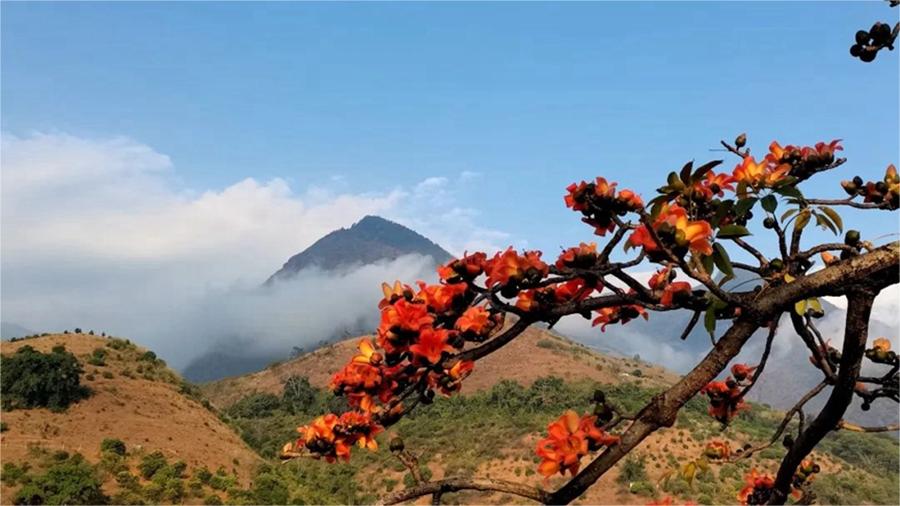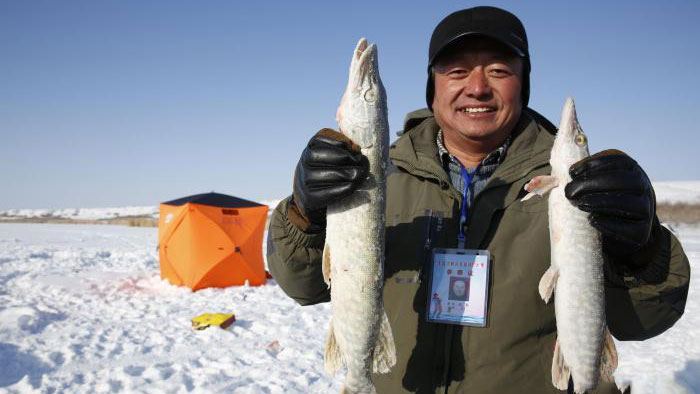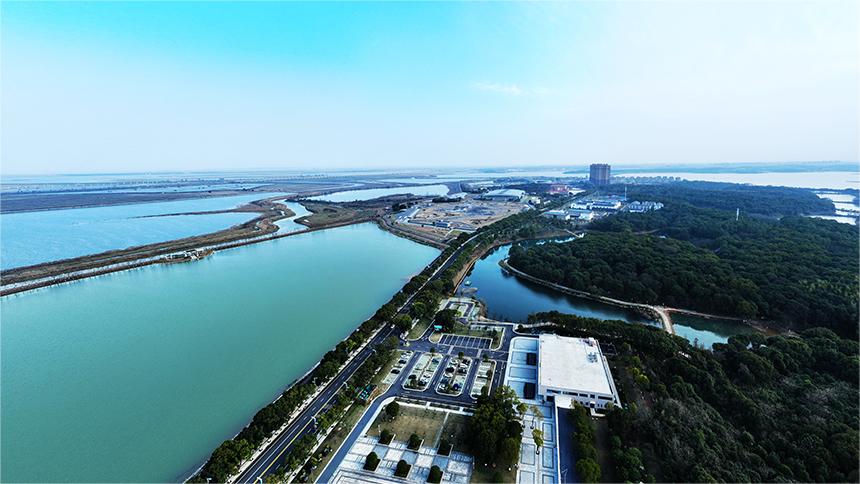Specialty agricultural products drive rural development
Specialty agricultural products from various regions in China, including cranberries from northeast China's Heilongjiang Province, matsutake biscuits from southwest China's Yunnan Province, dragon fruits from northwest China's Shaanxi Province and white-leg shrimps from northwest China's Gansu Province, have brought joy to consumers.
In recent years, China has witnessed the establishment of 180 advantageous and characteristic rural industrial clusters across different regions. These industrial chains have collectively generated an output value surpassing 4.6 trillion yuan ($640 billion). More than 10 million farmers are involved in these industrial chains.
An official from China's Ministry of Agriculture and Rural Affairs said while acquiring comprehensive knowledge about the local rural resources and implementing effective industrial planning and layout, various regions are also analyzing the evolving market environment and technological conditions. They are making the necessary adjustments to the supply chain to cater to consumer demand and cultivate new competitive advantages in rural characteristic industries. In 2023, China certified and registered 15,000 new green, organic, and premium agricultural products.
The flourishing development of facility agriculture has enabled many agricultural products to be grown and produced across regions, out of season, and supplied throughout the year. The modern facility planting area in China has reached 40 million mu (2.67 million hectares), with approximately 70 percent of meat, eggs, and dairy products and 52 percent of aquaculture products provided by facility farming.
In 2023, China's agricultural catalog system started taking shape. There are currently 144 national boutique cultivation brands, over 1,100 provincial-level catalog regional public brands, over 1,700 enterprise brands, and approximately 2,000 product brands.
Since 2020, the central government has supported the construction of 75,000 cold storage and preservation facilities, adding over 18 million tonnes of storage capacity. And in 2023, rural online retail sales hit 2.49 trillion yuan.
Cranberries in Heilongjiang
Cranberries are originally from North America, so how did they become a specialty in China's Heilongjiang Province?
Boasting of cool temperatures, acidic soil, and abundant high-quality water resources, Fuyuan city in Heilongjiang provides a favorable environment for cranberry cultivation, said Li Feng, manager of a local cranberry plantation in Fuyuan.

Photo shows cranberries harvested at a cranberry planting base, located in Fuyuan city, northeast China's Heilongjiang Province. (Photo/Courtesy of the culture, sports, radio, television, and tourism bureau of Fuyuan city)
From late September to mid-October, cranberries ripen. After being picked, the majority of the cranberries are processed into cranberry capsules, dried cranberries, and other products. Local businesses are also exploring new ways to utilize cranberries, such as developing cranberry beer and face masks.
In recent years, Fuyuan city has driven industry development and increased the farmers' incomes through a model that integrates leading enterprises, plantations and farmers. Over the past five years, the cranberry plantations have distributed over 4 million yuan in dividends to farmers, creating over 1,000 jobs annually.
Since the introduction of cranberry cultivation in 2014, the cranberry planting area in Fuyuan has reached 4,200 mu, making the city the largest cranberry plantation in the country. Last year, the city's cranberry production reached 2,700 tonnes.
Caviar in Hubei
In a workshop of the Qingjiang Sturgeon Valley Special Fisheries Co. in Yidu city, central China's Hubei Province, workers dressed in protective suits meticulously sorted fish roe using tweezers.
"These freshly harvested sturgeon roe undergo over 20 processes before being packed into jars, compressed, and sealed," explained Ji Jianyi, general manager of the company.
Caviar is traditionally sourced from wild sturgeon roe found in the Caspian Sea, Black Sea, and other bodies of water.
By overcoming the hurdles of breeding wild sturgeon, China has emerged as the global leader in sturgeon aquaculture and processing. China produces 70 percent of the world's caviar, with Yidu city alone accounting for 30 percent of the global market share, boasting of an annual output of 100 tonnes.
In recent years, Yidu has introduced a range of caviar products, leading to an increased presence of caviar on dining tables. Yidu is home to five sturgeon farming enterprises, collectively generating an annual output worth over 200 million yuan.
The history of sturgeon farming in Yidu dates back to the 1990s. Today, Yidu is home to over 26 sturgeon species and a breeding population of more than 1 million sturgeons.
Guizhou matcha
At a tea shop in Guiyang, southwest China's Guizhou Province, a cup of milk adorned with a drizzle of matcha liquid is a highly sought-after beverage. The matcha utilized in this milk tea originates from a "matcha super factory" at the foot of Fanjing Mountain in Tongren city, Guizhou.
Guizhou benefits from its high altitude, low latitude, limited sunlight, and ample clouds and mist, creating ideal climatic conditions for tea cultivation. Matcha production alone contributes to a quarter of the country's total output, and locally grown matcha is exported to more than 40 countries and regions.
In 2017, Guizhou Gui Tea Group Co., Ltd. was founded in Jiangkou county, Tongren, and entered the matcha industry. The subsequent year witnessed the establishment of the world's largest matcha production facility at the foot of Fanjing Mountain.
The expansive tea gardens at the foot of Fanjing Mountain are flourishing. As spring arrives and the tea plants start to sprout, technicians employ shading nets to cover them, a pivotal practice that distinguishes matcha-specific tea gardens from conventional ones.
"Through shading, we can enhance the concentration of amino acids and chlorophyll, resulting in greener leaves," said Lan Fangqiang, deputy general manager of the company. Lan explained that this process also decreases the amount of tea polyphenols, resulting in a reduction of bitterness.
Tongren has a high-standard matcha raw material base covering an area of 30,000 mu. In 2023, the total matcha production in the city reached 700 tonnes, with a total output value of 240 million yuan.
Australian macadamia nuts in Yunnan
Lincang city, located between the Lancang River and the Nujiang River in Yunnan Province, provides a suitable environment for the growth of Australian macadamia nuts.
In the 1990s, Lincang initiated the trial cultivation of Australian macadamia nuts, and through years of selection and promotion, the total area dedicated to Australian macadamia nuts cultivation in the city has now reached 2.63 million mu.

Photo shows Australian macadamia nuts in an orchard in Lincang city, Yunnan Province. (Photo courtesy of the publicity department of CPC Lincang municipal committee)
In a local village named Tianba, there is a song dedicated to Australian macadamia nuts.
"At first, the villagers were unfamiliar with Australian macadamia nuts. However, after a bumper harvest last year, there has been a surge in enthusiasm for cultivation," said Wang Dongquan, Party chief of the village.
To promote the development of the nut industry, Lincang has attracted numerous enterprises. "Buyers display great enthusiasm for the nuts even while they are still on the trees," Wang stated.
In 2023, the village achieved an impressive macadamia nut production of over 6,000 tonnes, generating output worth over 50 million yuan.
Photos
Copyright © 2024 People's Daily Online. All Rights Reserved.









